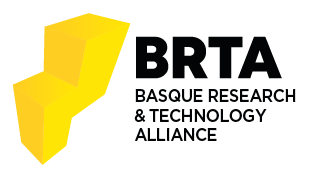High accuracy hybrid kinematic modeling for serial robotic manipulators
Egileak: Ander Etxezarreta Arruti Gorka Kortaberria Brahim Ahmed Jon Flores Javier Hernández Afonso Elena Lazkano
Data: 01.09.2024
Robotica
Abstract
In this study, we present a hybrid kinematic modeling approach for serial robotic manipulators, which offers improved accuracy compared to conventional methods. Our method integrates the geometric properties of the robot with ground truth data, resulting in enhanced modeling precision. The proposed forward kinematic model combines classical kinematic modeling techniques with neural networks trained on accurate ground truth data. This fusion enables us to minimize modeling errors effectively. In order to address the inverse kinematic problem, we utilize the forward hybrid model as feedback within a non-linear optimization process. Unlike previous works, our formulation incorporates the rotational component of the end effector, which is beneficial for applications involving orientation, such as inspection tasks. Furthermore, our inverse kinematic strategy can handle multiple possible solutions. Through our research, we demonstrate the effectiveness of the hybrid models as a high-accuracy kinematic modeling strategy, surpassing the performance of traditional physical models in terms of positioning accuracy.
BIB_text
title = {High accuracy hybrid kinematic modeling for serial robotic manipulators},
journal = {Robotica},
pages = {3211-3229},
volume = {42},
keywds = {
automation; kinematics; manufacturing; robot dynamics; serial manipulator design; topological modeling of robots
}
abstract = {
In this study, we present a hybrid kinematic modeling approach for serial robotic manipulators, which offers improved accuracy compared to conventional methods. Our method integrates the geometric properties of the robot with ground truth data, resulting in enhanced modeling precision. The proposed forward kinematic model combines classical kinematic modeling techniques with neural networks trained on accurate ground truth data. This fusion enables us to minimize modeling errors effectively. In order to address the inverse kinematic problem, we utilize the forward hybrid model as feedback within a non-linear optimization process. Unlike previous works, our formulation incorporates the rotational component of the end effector, which is beneficial for applications involving orientation, such as inspection tasks. Furthermore, our inverse kinematic strategy can handle multiple possible solutions. Through our research, we demonstrate the effectiveness of the hybrid models as a high-accuracy kinematic modeling strategy, surpassing the performance of traditional physical models in terms of positioning accuracy.
}
doi = {10.1017/S026357472400136X},
date = {2024-09-01},
}







